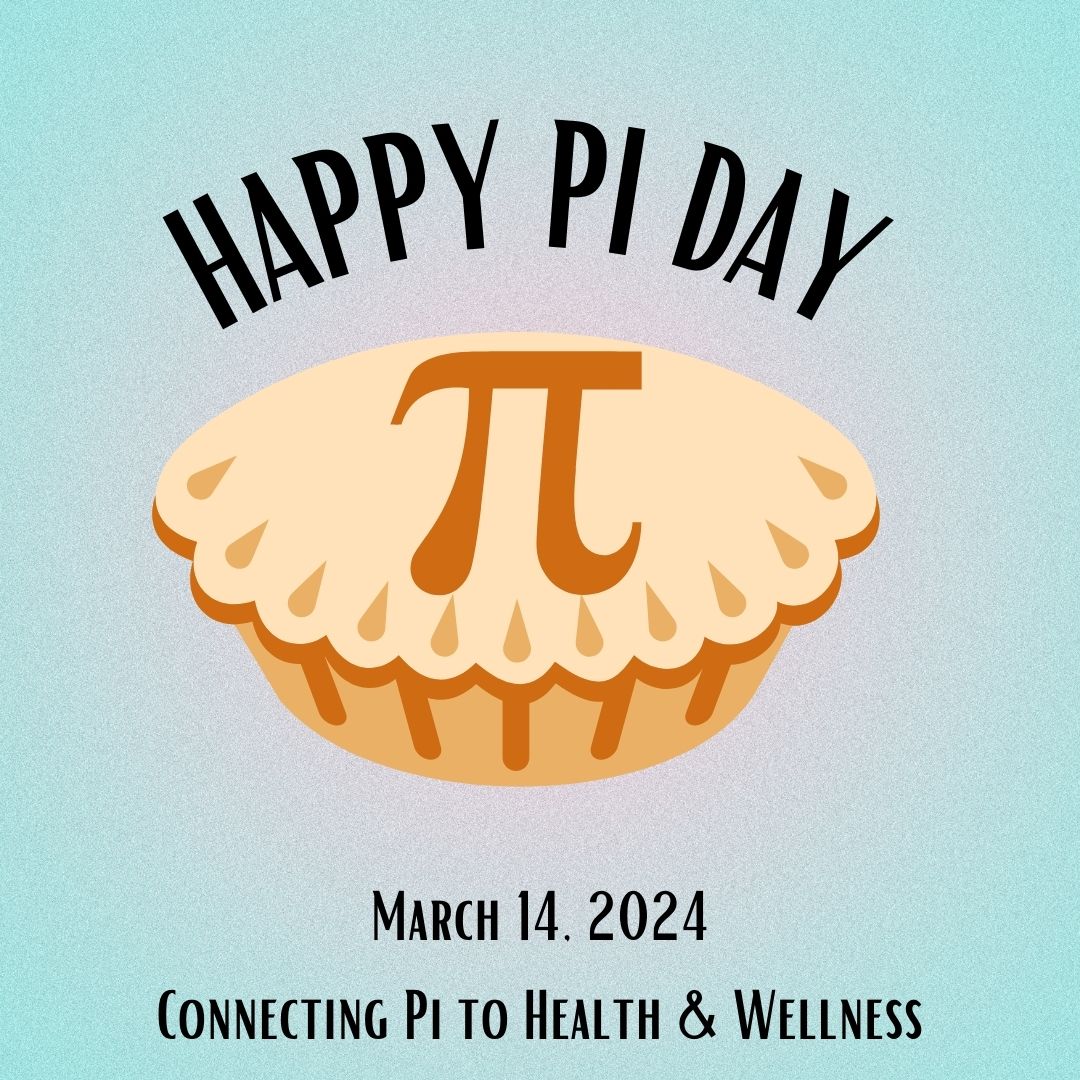As a mathematician's daughter, pi day has always been a special day in our household. This year I contemplated what was the connection to this amazing number and my field, health and wellness.
March 14th, or 3/14, is celebrated worldwide as Pi Day, in honor of the mathematical constant π (pi), approximately equal to 3.14159. This day is not only a celebration of mathematics and the mysteries of the circle but also an opportunity to explore the fascinating connections between math and health and wellness.
At first glance, the connection between the mathematical constant π and health might not be apparent. However, mathematics, including concepts like π, plays a crucial role in various aspects of health and wellness. From medical imaging to statistical analysis in epidemiology, math is integral to understanding and improving human health.
One of the most direct connections between π and health is through the concept of the circle, which is central to many physiological structures and processes. For example, the circular shape of red blood cells optimizes their ability to transport oxygen efficiently throughout the body. Additionally, the circular motion of joints and the cyclical nature of various bodily rhythms, such as the cardiac cycle and circadian rhythms, are essential for maintaining physical and mental well-being.
Moreover, π is crucial in the field of medical imaging, particularly in technologies like computed tomography (CT) scans and magnetic resonance imaging (MRI). These imaging techniques rely on mathematical principles, including those related to circles and π, to create detailed images of the body's internal structures. These images are vital for diagnosing and treating a wide range of medical conditions.
On a broader scale, mathematical models and statistical analysis, which often involve π, are used extensively in public health and epidemiology. They help in understanding the spread of diseases, evaluating the effectiveness of interventions, and making informed decisions about healthcare policies. The ongoing COVID-19 pandemic has highlighted the importance of mathematical modeling in predicting the course of the disease and guiding public health responses.
In addition to these practical applications, there is also a more philosophical connection between mathematics and wellness. The pursuit of mathematical understanding, like the quest for personal well-being, is a journey of discovery, balance, and harmony. Just as π represents a constant in the mathematical world, finding balance and consistency in our daily habits is crucial for maintaining health and wellness.
Pi Day is not only a celebration of a mathematical constant but also a reminder of the intricate connections between mathematics and health. By appreciating the role of math in medical science and public health, we can gain a deeper understanding of the complex systems that govern our well-being. So, as we celebrate Pi Day, let's also celebrate the vital role of mathematics in keeping us healthy and well.
Gluten-Free, Pelvic and Hormone Health-Friendly Sugar-Free Pi(e) Recipe for Pi Day
Celebrate Pi Day with a delicious and healthy pie that's good for your pelvic and hormone health. This gluten-free, sugar-free recipe is packed with nutrients and flavor, making it a perfect treat for anyone looking to maintain a balanced and healthy lifestyle.
Ingredients:
Crust:
- 1 1/2 cups almond flour
- 1/4 cup coconut flour
- 1/4 cup ground flaxseed
- 1/4 cup coconut oil, melted
- 1 egg
- Pinch of salt
Filling:
- 2 cups fresh or frozen berries (such as blueberries, raspberries, and blackberries)
- 1/4 cup chia seeds
- 2-3 tablespoons monk fruit sweetener or stevia (adjust to taste)
- 1 teaspoon vanilla extract
- 1/2 teaspoon cinnamon
- Zest of 1 lemon
Instructions:
-
Preheat the oven to 350°F (175°C).
-
Prepare the crust: In a mixing bowl, combine almond flour, coconut flour, ground flaxseed, and a pinch of salt. Add the melted coconut oil and egg, and mix until the dough comes together. Press the dough into a 9-inch pie dish, forming an even layer on the bottom and up the sides. Bake for 10-12 minutes, or until the edges are golden brown. Remove from the oven and let cool.
-
Make the filling: In a saucepan, combine the berries, chia seeds, monk fruit sweetener or stevia, vanilla extract, cinnamon, and lemon zest. Cook over medium heat, stirring occasionally, until the berries are softened and the mixture has thickened, about 10-15 minutes. Remove from heat and let cool slightly.
-
Assemble the pie: Pour the berry filling into the cooled crust and spread evenly. Refrigerate for at least 2 hours or until the filling is set.
-
Serve: Slice the pie and serve chilled. Garnish with fresh berries or a dollop of coconut whipped cream if desired.
Health Benefits:
- Almond flour and coconut flour: These gluten-free alternatives are high in fiber and healthy fats, supporting hormone balance and digestive health.
- Ground flaxseed: Rich in lignans, which can help balance estrogen levels and promote pelvic health.
- Berries: Packed with antioxidants and vitamins, berries support overall health and can help reduce inflammation.
- Chia seeds: High in omega-3 fatty acids and fiber, chia seeds support hormonal balance and gut health.
- Monk fruit sweetener or stevia: Natural, sugar-free alternatives that won't spike blood sugar levels.
Enjoy this healthy and delicious pie on Pi Day or any day you're in the mood for a guilt-free treat!

